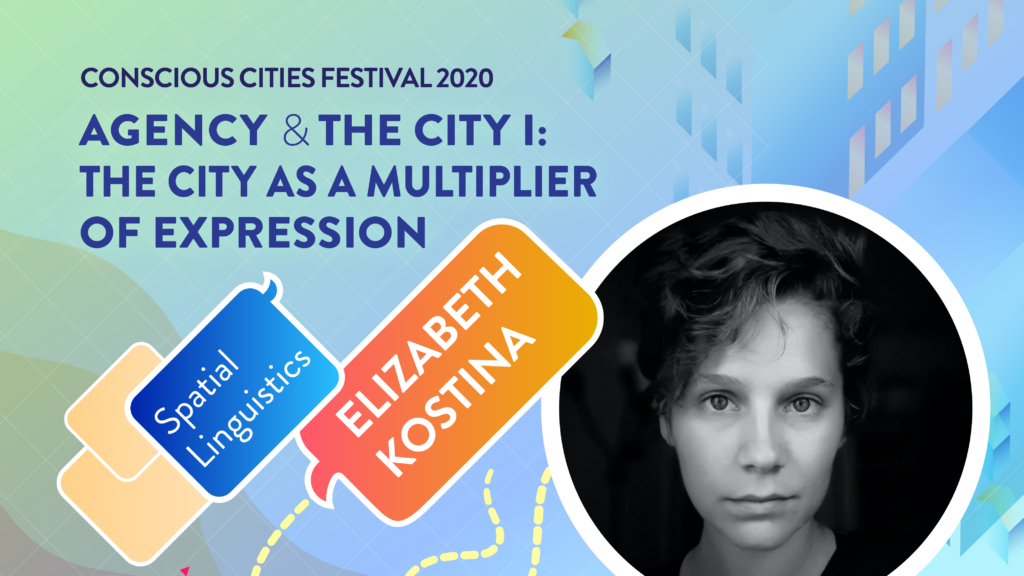1. Introduction.
Over the last decade or so, work in the field of neuroscience has begun to provide a new understanding of how architecture affects our bodies and minds. The findings could offer a revolutionary new basis for adaptive and healing design4,9,22. Humankind stands at the threshold of an innovative approach to buildings and cities driven by science instead of abstract expressionist aesthetics, which have come to dominate the “cutting-edge” in architecture1.
Will this new approach make a difference? Design based on architecture that is informed by results in neuroscience has three important implications:
(i) It might eventually replace accepted design typologies that evidently contribute to the degradation of human well-being.
(ii) It can re-validate many older adaptive methods that were abandoned in the push for visual design innovation.
(iii) It might revolutionize architectural education by radically transforming the present studio system of teaching.
After summarizing some of the key results obtained so far, I outline how different groups of researchers and thinkers need to link to each other in order to define the new discipline. At the same time, I point out major ideological obstacles to adopting this emerging design approach. I suggest an experiment that might explain the disagreement between the sometimes opposite opinions of architects and common people7,23.
2. Can neuroscience help create a more healing architecture?
During the past few years, we are discovering how the built environment affects our psychological state and long-term health1,9,11,17,22. Design that applies a combination of neuroscience, physiology, and psychology is defining a new discipline for constructing a much healthier world. For example, Roger Ulrich showed in 1984 that a natural view from a hospital window improved healing7,19. Thirty years later, his findings have been incorporated into Biophilic Design, which an increasing number of practitioners are integrating into their projects15.
Other experiments reveal the need for bilateral symmetry and abstract face-like features in buildings; not as aesthetic preferences, but because our neural system seeks to connect with those specific features in the environment21,22. Humans try to identify specific geometries such as: a vertical-axis bilateral symmetry around a building’s entrance (exactly as in an animal’s face); the entrance itself defining an opening like a “mouth”; symmetrically-positioned detailed regions that could remind us of “eyes”; and other symmetrical “ear”-like or “nostril”-like elements on both sides, etc.15,21,22
How interior and exterior spaces affect us is the next priority for study. For decades, the shape of habitable volumes has been determined strictly according to formal criteria16. Architecture schools and professionals are very reluctant to change their habits, even when common people show preferences opposite to those of trained architects7. But our evolving understanding reveals the need for spatial design to take inspiration from our neuro-physiological preference for curves and a sense of enclosure3,20. Most of us rely on our neurophysiology for evaluating a building or urban space, whereas architectural training conditions us to override natural responses7,17,18,23.
3. New design toolkits from Christopher Alexander and Biophilia.
One group of researchers and practitioners focuses on the design framework created by Christopher Alexander1,2. Key mathematical concepts underpinning this research effort include Alexander’s “Fifteen Fundamental Properties”1, biophilia10,15,19, complexity11,12,14,21, convex space1,2,16, design patterns2,16, fractals13,22, scaling coherence1,14, and symmetries1,11. Together, these linked and overlapping sub-disciplines define an innovative approach that aims to break design free from the industry’s image-based paradigm.
Environmental psychologists are convinced that an environment built by following these adaptive design rules is measurably better for human health, intelligence, and well-being8,11,15,21. Architectural practice is long overdue for a paradigm shift that recognizes an innate need for cognitive relationships. The above design techniques were developed either from heuristics (observation), or mathematics, and are now being partly confirmed by neuroscience.
Yet another topic under development combines mathematical symmetries with experiments on the perception of buildings12,13,21,22. Here we discover neurological preferences for very specific symmetries, as already found in traditional and vernacular architectures. Those symmetries (not only the usual reflectional symmetries, but more importantly scaling symmetries as in fractals) correlate compositional elements into easily-grasped relationships. Complex symmetries generate environmental information that our brain seeks in reading and negotiating our surroundings, and they organize the information so that we can easily process it (“perceptual fluency”)11,12,13,14. Our brain has specific cells that seek and detect precisely those complex symmetries11,12,21,22. Monotonous repetition has a negative cognitive effect, however12.
Alexander’s work explains why our neurophysiology has these very specific, linked preferences: nature creates physical systems with a stable mathematical geometry; in turn, organisms evolved a neural system with a preference for those generating structures1. In this epistemological outlook, adaptive design preferences are not a fluke of our neural system, but go straight to the existence of stable configurations in nature.
4. Linking diverse research groups together.
One of my main concerns is bringing together disparate groups of researchers working in parallel. Each group uses a different vocabulary to describe similar concepts, thus the logical connections are not obvious. Nevertheless, it is clear that we are seeking the same goal: an adaptive design toolkit that improves human health and well-being through the structure of the built environment.
Biophilia is already emerging as a robust sub-discipline10,15,19. What is not generally realized is the large degree of overlap it has with the earlier Design Pattern approach developed by Christopher Alexander2,10,16,19. Patterns, moreover, cover much more ground than biophilia, extending into other sub-disciplines of adaptive architecture. The perception of space can be better understood by starting from a set of discovered spatial design patterns supplemented with new results from neuroscience research15,16.
5. Support from traditional and vernacular architectures.
Traditional, vernacular, and owner-built structures have a history stretching back millennia. Some of these have developed to cater to our neurophysiology in an essential and comprehensive manner, having being adapted according to direct emotional feedback2,16. This “unofficial” portion of the built environment out of which design patterns arise has historically accounted for the vast majority of construction activity worldwide.
Healing environments are reminiscent of but don’t need to copy vernacular architecture6,15,16,17. Design techniques that adapt to our neurophysiology necessarily bring us to appreciate design and tectonic solutions from our own past often swept away by industrial modernism. We do not advocate returning to older practices out of nostalgia, but instead urge their re-discovery in a new, ultra-modern context. The rewards of adopting healing design tools without ideological prejudice against the past are going to be profound.
6. Many isolated results need to coalesce.
In a pioneering field that is still developing, several isolated groups tend to work on similar topics. Eventually, a phase transition occurs when small individual groups connect and cluster, creating a newly-established unified discipline.
In graph theory, isolated nodes randomly connect over time, building many small clusters. When a critical point is reached, the majority of the small clusters join into one large cluster (the Erdös-Rényi Theorem). This mechanism can only act among nodes of knowledge that easily connect. If groups of researchers propose opposite rules for how neuroscience applies to architecture, then inherent contradictions preclude any connection. Isolated results mixed with errors, prejudices, and untested opinions will never coalesce into a proper discipline. Error-correcting mechanisms will easily take care of verification once the discipline is formed. The remainder of this paper points out hidden pitfalls in developing such a program.
7. A dangerous logical fallacy.
Prevailing custom could possibly impede neuroscience from being used to create a new, healthier architecture. We should endorse methods of design only if those are supported by experimental findings. Yet, preconceptions of what is good architecture make architectural culture a victim of false reasoning. Some people eager to apply science towards adaptive design stumble into an ideological trap and become confused. They discuss neurological responses to adaptive human environments, but illustrate those scientific results with alien, oppressive buildings designed by fashionable architects.
Recent findings in biophilia and neurophysiology reveal which architecture is healthy for us; but famous buildings don’t necessarily embody positive biophilic and neurophysiological qualities1,16. This is difficult to accept, even by those interested in the latest research. Work by architectural heroes that is seriously deficient in adaptive human qualities as determined by neurological tests will have to be rejected as a model to follow.
8. Separate and incompatible architectural disciplines.
Regrettably, architectural design techniques based on scientifically-verifiable insights clash with what is taught in architecture schools today17,18. Training to design the same industrial boxes (or warped distortions of them) downplays and ignores learning from our body’s responses to environmental stimuli and from vernacular architectures. Our education system has for decades focused on the visual appeal of student projects while neglecting how the user actually experiences full-size buildings. It becomes difficult to overcome the 20th Century’s distancing from (and even antagonism towards, whenever visual innovation might be constrained) the sensory-based tools we are trying to re-introduce today.
A large number of persons who presently make their living according to the industrial-modernist design paradigm will find it difficult to adapt to what neuroscience can offer the profession7,19,22. Change towards healthy design is primarily market-driven and now occupies a niche in the profession. Contemporary architectural culture is still stuck in image-based design, while the canonical styles promoted by academia dominate architecture prizes, schools, publishing, and international commissions.
9. Psychological conditioning complicates neurological responses.
I conjecture that architects exhibit contradictory signals in their neurological responses to shapes and environments (locked opposite valences)7. This could be checked through experiments analogous to neurolinguistic ones that measure the response to words of either attractive (positive) or repulsive (negative) valence5,6. Individuals trained in industrial-modernist design react with an internally-conflicting signal that should resemble the complex response to bivalent words. Because they mix positive with negative valences, bivalent judgements take a much longer time to register and show increased cerebral activation compared to monovalent responses from common people5,6.
This cognitive phenomenon is reminiscent of schizophrenia and results from conditioning. Abstract design exercises instill a subconscious preference for industrial forms, non-convex spaces, textures, and materials of industrial modernism that normally alarm us17,18,23. Post-war architectural training superimposes a liking for negative valences, opposite to our evolution. Taking advantage of neuroplasticity, the Bauhaus teaching method engages a person emotionally and physically by using the tactile sense and exercising one’s muscles. Those kinesthetic exercises re-wire students’ brains to ignore bodily signals (our visceral response to structures), and replace them with intellectualised abstractions17,18,23. Making compositions and building studio models with an empty, unnatural shape teaches students to judge according to style and ignore conflicting valences.
10. Conclusion.
Neuroscience opens a path to a new kind of adaptive architectural practice that can measurably increase human well-being. Many of the components necessary for this new design discipline are already in place, and others are being developed. We still need to solidify existing results on how the environment affects our body and health, and complete this program with research that explores new directions. Bringing together different groups of researchers who are all pursuing the same goal will strengthen the results, and help to forge a major new global discipline. The “Conscious Cities” group is making such an effort4.
Nevertheless, there exist obstacles that need to be overcome to achieve this objective. The portion of this discussion listing the dangers should not be interpreted as polemic, but simply as a helpful warning. Unless we are aware of possible ideological pitfalls (in this instance, considerable), we will never achieve our goal of an adaptive and healthier architecture. By ignoring neuro-physiological responses, architectural theory was left essentially in a vacuum for many years. A scientific basis for understanding architecture will now fill in this gap.
Acknowledgments: Thanks to Kenneth G. Masden, Michael W. Mehaffy, Catherine O. Ryan, and Ann Sussman for their helpful comments.
References
1 Alexander C (2001-2005) The Nature of Order, Books 1-4. Center for Environmental Structure, Berkeley, California. Book 1: The Phenomenon of Life, 2001; Book 2: The Process of Creating Life, 2002; Book 3: A Vision of a Living World, 2005; Book 4: The Luminous Ground, 2004.
2 Alexander C, Ishikawa S, Silverstein M, Jacobson M, Fiksdahl-King I & Angel S (1977) A Pattern Language. Oxford University Press, New York.
3 Bar M & Neta M (2006) Humans Prefer Curved Visual Objects. Psychological Science 17 No. 8: 645-648.
4 Fritz A & Palti I (editors) (2017) Conscious Cities: Bridging Neuroscience, Architecture, and Technology. Anthology No. 2.
5 Jacobs AM, Vo MLH, Briesemeister BB, Conrad M, Hofmann MJ, Kuchinke L, Lüdtke J & Braun M (2015) 10 years of BAWLing into affective and aesthetic processes in reading: what are the echoes?Frontiers in Psychology 6, Article 714.
6Kuhlmann M, Hofmann MJ, Briesemeister BB & Jacobs AM (2016) Mixing positive and negative valence: Affective-semantic integration of bivalent words. Scientific Reports 6: 30718.
7 Mehaffy MW & Salingaros NA (2011) Architectural Myopia: Designing for Industry, Not People. Shareable, 5 October 2011.
8 Mehaffy MW & Salingaros NA (2012) Intelligence and the Information Environment. Metropolis, 25 February 2012. Chapter 7 of Design for a Living Planet. Sustasis Press, Portland, Oregon, 2015.
9 Robinson S & Pallasmaa J (editors) (2015) Mind in architecture: Neuroscience, embodiment, and the future of design. MIT Press, Cambridge, Massachusetts.
10 Ryan, CO, Browning, WD, Clancy, JO, Andrews SL & Kallianpurkar, NB (2014) Biophilic Design Patterns: Emerging Nature-Based Parameters for Health and Well-Being in the Built Environment. Archnet–IJAR: International Journal of Architectural Research 8 Issue 2: 62-76.
11 Salingaros NA (2003) The Sensory Value of Ornament. Communication & Cognition 36 No. 3-4: 331-351. Revised version is Chapter 4 of A Theory of Architecture (2nd Edition), Sustasis Press, Portland, Oregon, 2014.
12 Salingaros NA (2011) Why Monotonous Repetition is Unsatisfying. Meandering Through Mathematics, 2 September 2011.
13 Salingaros NA (2012) Fractal Art and Architecture Reduce Physiological Stress. Journal of Biourbanism II No. 2: 11-28. Chapter 26 of Unified Architectural Theory. Sustasis Press, Portland, Oregon, 2013.
14 Salingaros NA (2014) Complexity in Architecture and Design. Oz Journal 36: 18-25.
15 Salingaros NA (2016) Biophilia & Healing Environments. Off the Common Books, Amherst, Massachusetts. Published online by Terrapin Bright Green LLC, New York.
16 Salingaros NA (2017) Design Patterns and Living Architecture. Sustasis Press, Portland, Oregon. Includes essays published online in Metropolis, 2015-2016.
17 Salingaros NA (2017) Calling for an Architecture That Connects Us to Our Bodies. Common Edge, 22 March 2017.
18 Salingaros NA (2017) What Architectural Education Does To Would-Be Architects. Common Edge, 8 June 2017.
19 Salingaros NA & Masden KG (2008) Neuroscience, the Natural Environment, and Building Design. Chapter 5 of Kellert SR, Heerwagen J & Mador M (editors) Biophilic Design: the Theory, Science and Practice of Bringing Buildings to Life. John Wiley, New York: 59-83.
20 Shemesh A, Talmon R, Karp O, Amir I, Bar M & Grobman YJ (2016) Affective response to architecture – investigating human reaction to spaces with different geometry. Architectural Science Review, DOI: 10.1080/00038628.2016.1266597.
21 Sussman A (2015) Why Brain Architecture Matters for Built Architecture. Metropolis, 19 August 2015.
22 Sussman A & Hollander JB (2015) Cognitive Architecture. Routledge, New York.
23 Wilson MA (1996) The Socialization of Architectural Preference. Journal of Environmental Psychology 16: 33-44.









